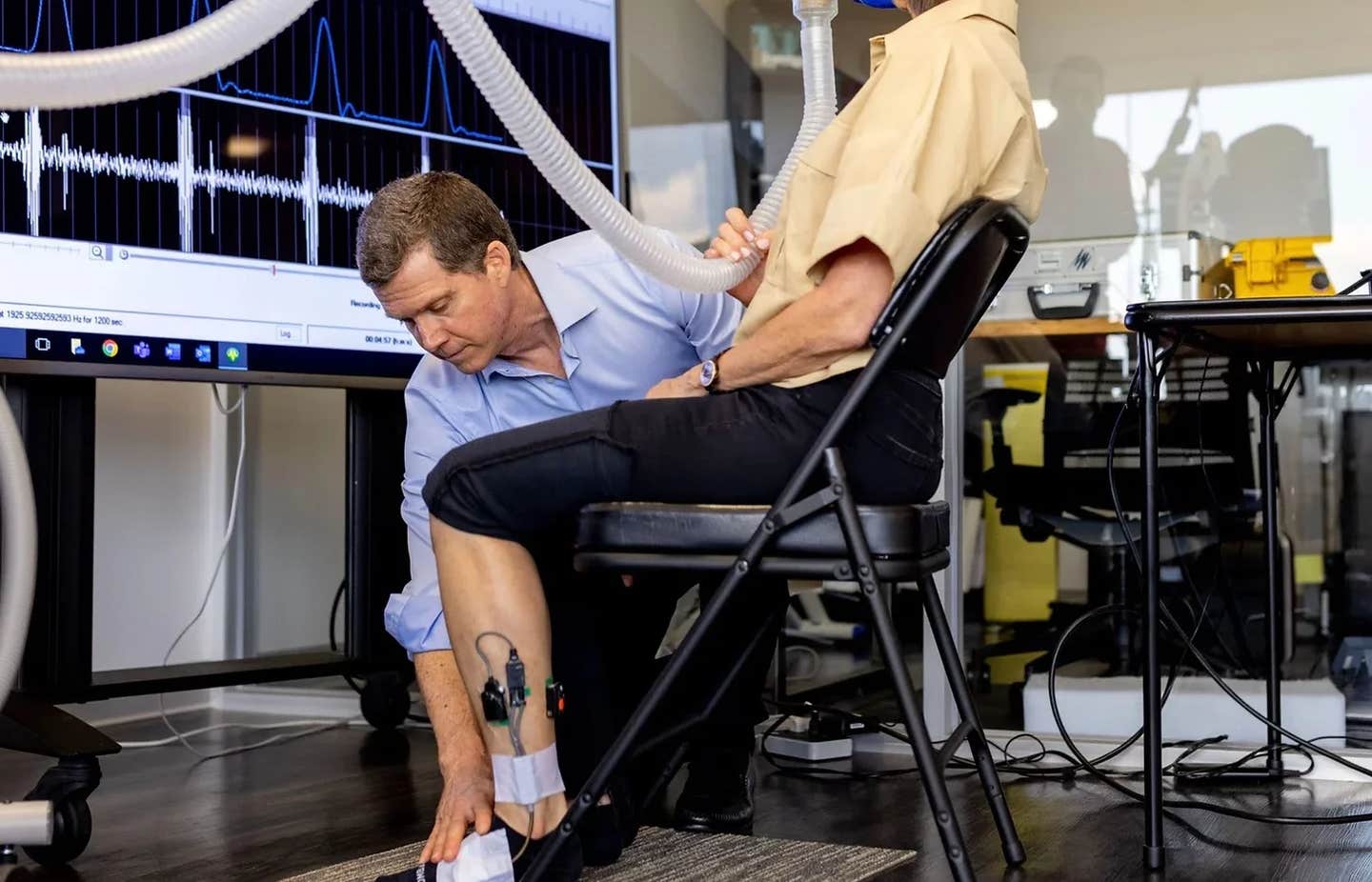Breakthrough therapy repairs cartilage damage in under 4 hours
Osteoarthritis affects almost 530 million people worldwide leading to the breakdown of joint tissues and is a leading cause of disability

After three days of treatment, the cartilage cells began producing essential protein components critical to their repair process. (CREDIT: CC BY-SA 4.0)
A groundbreaking therapy first introduced by Northwestern University researchers in 2021 has shown promise in regenerating human cartilage. Originally designed to repair tissues and reverse paralysis in spinal cord injuries, the innovative approach uses fast-moving "dancing molecules" to stimulate cellular healing.
In its latest application, the therapy successfully activated gene expression necessary for cartilage regeneration within just four hours. Remarkably, after three days of treatment, the cartilage cells began producing essential protein components critical to their repair process.
The study also highlighted that the motion of these molecules plays a pivotal role in the treatment's success. Researchers found that the increased movement of the molecules directly enhanced their ability to trigger cartilage growth. These findings, showcasing the potential of molecular motion in regenerative medicine, were published in the Journal of the American Chemical Society.
"When we first observed therapeutic effects of dancing molecules, we did not see any reason why it should only apply to the spinal cord," said Samuel I. Stupp, who led the study. "Now, we observe the effects in two cell types that are completely disconnected from one another — cartilage cells in our joints and neurons in our brain and spinal cord. This makes me more confident that we might have discovered a universal phenomenon. It could apply to many other tissues."
Stupp, an expert in regenerative nanomedicine, is a Board of Trustees Professor at Northwestern and founding director of the Simpson Querrey Institute for BioNanotechnology and the Center for Regenerative Nanomedicine. Shelby Yuan, a graduate student in Stupp's lab, was the primary author of the study.
Related Stories
Osteoarthritis affects nearly 530 million people worldwide as of 2019, according to the World Health Organization. This degenerative disease leads to the breakdown of joint tissues over time and is a leading cause of disability. In severe cases, cartilage wears so thin that joints essentially become bone-on-bone, causing significant pain and loss of function. The primary treatment for severe osteoarthritis is joint replacement surgery, which is both expensive and invasive.
"Current treatments aim to slow disease progression or postpone inevitable joint replacement," Stupp explained. "There are no regenerative options because humans do not have an inherent capacity to regenerate cartilage in adulthood."
Stupp and his team hypothesized that "dancing molecules" could encourage the regeneration of stubborn tissue. These molecules, previously developed in Stupp's lab, form synthetic nanofibers comprising tens to hundreds of thousands of molecules with potent signals for cells. By adjusting their chemical structure, the team discovered that the molecules' movements allowed them to effectively engage with cellular receptors, which are also in constant motion on cell membranes.
Once inside the body, these nanofibers mimic the extracellular matrix of surrounding tissue, matching its structure, motion, and bioactive signals. This enables the synthetic materials to communicate with cells effectively.
"Cellular receptors constantly move around," Stupp noted. "By making our molecules move, 'dance' or even leap temporarily out of these structures, known as supramolecular polymers, they are able to connect more effectively with receptors."
In the study, the team focused on receptors for a protein critical for cartilage formation and maintenance, developing a circular peptide to mimic the bioactive signal of transforming growth factor beta-1 (TGFb-1). They incorporated this peptide into two different molecules that form supramolecular polymers in water, each mimicking TGFb-1. One polymer allowed greater molecular movement, while the other restricted it.
"We wanted to modify the structure in order to compare two systems that differ in the extent of their motion," Stupp said. "The intensity of supramolecular motion in one is much greater than the motion in the other one."
While both polymers activated the TGFb-1 receptor, the one with more mobile molecules was significantly more effective. In some aspects, it even outperformed the natural protein that activates the TGFb-1 receptor.
"After three days, the human cells exposed to the long assemblies of more mobile molecules produced greater amounts of the protein components necessary for cartilage regeneration," Stupp said. "For the production of one of the components in the cartilage matrix, known as collagen II, the dancing molecules containing the cyclic peptide that activates the TGF-beta1 receptor were even more effective than the natural protein."
Stupp's team is currently testing these systems in animal studies and adding additional signals to create highly bioactive therapies. "With the success of the study in human cartilage cells, we predict that cartilage regeneration will be greatly enhanced when used in highly translational pre-clinical models," Stupp said. "It should develop into a novel bioactive material for regeneration of cartilage tissue in joints."
The lab is also exploring the potential of dancing molecules to regenerate bone, with promising early results expected to be published later this year. Simultaneously, they are testing these molecules in human organoids to accelerate the discovery and optimization of therapeutic materials.
Stupp's team is also building a case to the Food and Drug Administration for clinical trials to test the therapy for spinal cord repair.
"We are beginning to see the tremendous breadth of conditions that this fundamental discovery on 'dancing molecules' could apply to," Stupp said. "Controlling supramolecular motion through chemical design appears to be a powerful tool to increase efficacy for a range of regenerative therapies."
Note: Materials provided above by The Brighter Side of News. Content may be edited for style and length.
Like these kind of feel good stories? Get The Brighter Side of News' newsletter.
Joseph Shavit
Head Science News Writer | Communicating Innovation & Discovery
Based in Los Angeles, Joseph Shavit is an accomplished science journalist, head science news writer and co-founder at The Brighter Side of News, where he translates cutting-edge discoveries into compelling stories for a broad audience. With a strong background spanning science, business, product management, media leadership, and entrepreneurship, Joseph brings a unique perspective to science communication. His expertise allows him to uncover the intersection of technological advancements and market potential, shedding light on how groundbreaking research evolves into transformative products and industries.



